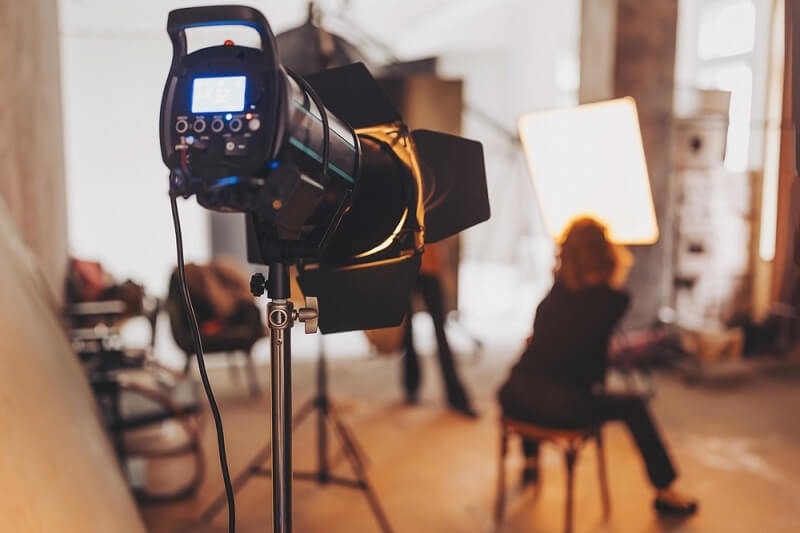
Taking a portrait is not just a photograph of someone's face—it is the story, emotion, and personality that are captured within the frame of your lens. Regardless if you are photographing a friend in natural light or selecting a portrait setting in a commercial studio setup, knowing a few great portrait tips and tricks can not only help you produce beautiful portraits but also engaging portraits with feeling.
Have you ever thought to yourself How to create better portraits, or Where to find posing ideas for the invested shoot? If so, this comprehensive guide will walk you through the basics of everything related to photography, helping you construct portraits using the skills you've gained over the years, skills you may not have known existed. Take the time to learn about the basics of composition and light, so you can utilize your photography camera settings, shooting techniques, and other portrait photography ideas with confidence, building on them as you invest time in photography.
When creating beautiful portraits, it is essential to utilize the basics of composition, light, and engaging with the subject. The portrait photography tips below will inspire you to make images that are genuine, balanced, and alive.
All great portraits begin with rapport. Before you ever lift your camera, spend a few minutes chatting with your subject. Understand their personality, what they deem comfortable, and how they choose to pose. The more relaxed your subject is, the more genuine and emotional the pictures will be.
Lens choice has a substantial impact on portraits. The best lens for most portraits is typically a 50mm or 85mm prime lens. These lenses allow for nice compression and sharpness. A larger aperture (f/1.8 or f/2.8) will produce a nice, creamy blur (bokeh) in the background, emphasizing your subject beautifully.
The composition of portraiture is equally as important as lighting. When composing portraits, be sure to place your subject's eyes along the top third of the frame (the rule of thirds). This will result in a more balanced image that has the focal point you want your audience to have. Play with your framing, angles, and depth to emphasize what is unique about your subject.
Having a clean, uncluttered background will keep the viewer's eye on your subject. You can find a texture that is natural or a neutral color that complements skin tones and clothing that does not become too busy with the background of the portrait.

Natural light creates some of the most beautiful and exciting portraits. Getting to be able to implement it is one of the most basic pieces of advice for portrait photography. Natural Light Portrait Guide will show you a way to take advantage of the available light and create an amazing portrait.
The hour before sunset and after sunrise, known as the golden hour, features soft, warm light, which lends warmth and depth to your photographs. The light will wrap around your subject softly, reducing ugly shadows and leaving a natural glow.
Shooting when it's bright and sunny can be rough and make shadows that don't look good or flattering on your subject. If you have to shoot outside in bright light, try to keep your subject in the shade or use a diffuser to help diffuse the light, keeping it even and minimizing squinting for your subject.
A reflector is a simple but effective piece of equipment for balancing light in a portrait. Use a reflector to reflect the light onto your subject's face. This will turn ugly shadows into something nice!
Reflectors have gold, silver, and white surfaces—try them out to find the one that best suits your desired mood.
Knowing how to shoot better portraits begins with a mix of technical competence and human understanding. The strongest portraits are usually the ones that come from trust, imagination, and perseverance.
Provide your subject with soft guidance and not stiff direction. Allow them to move naturally, and take spontaneous shots in between poses. This makes their true personality show through.
In portraiture, the eyes are the key to emotion. Always make sure they are sharp and in focus. Employ single-point autofocus to lock the eyes, and when shooting wide open (f/1.8 or f/2.0), pay attention to your depth of field.
Invigorate laughter, contemplation, or even quiet. A combination of facial expressions may convey an entire narrative. Take several shots and allow your subject's emotions to develop throughout the session.
Even the best idea will not work without the proper technical ground to stand on. Mastering the best portrait camera settings is critical for gaining tack-sharp, professional-grade portraits.
Put your camera in aperture priority mode (A or Av). This enables you to set the depth of field, and your camera will automatically adjust the shutter speed. A large f-value (f/1.8–f/2.8) keeps the subject sharp and gives a soft, blurred background.
Maintain ISO at the lowest possible setting to minimize noise. In bright lighting, ISO 100–400 is best. For indoor or low-light portraits, raise the ISO, but balance it with aperture and shutter speed to achieve a sharp picture.
If your subject is in motion, shoot for a shutter speed of at least 1/125 sec. For posed portraits, you may drop down a bit, but avoid motion blur. Stabilize your camera with a tripod at all times for optimal sharpness.
When shooting tricky lighting or tight close-ups, manual focus provides complete control. This method works particularly well when shooting with very wide apertures, where autofocus fails to catch the precise focus point.
Having ideas for posing for portraits can break a session. The goal for you is to get your subject to look their best without losing their authentic character.
Everyone knows easy positions: leaning in just slightly, hands or arms softly crossed, or in the pockets. Just try to move from one position to the other, so they don't look so stiff!
Things, like a hat or book, may tell your story and help soften your portrait. Just keep things very simple to avoid oversteering the picture.
Shooting a little angle above, particularly for attention to the eyes, and shooting down below to make your subject more muscular. Change and explore the framing; smaller framing evokes a feeling of intimacy, and larger framing is more contextual.
When approaching the portraits of individual people, be aware of the interaction between them. You may invite crap… deep laughter, easy touch, or other non-verbal things, to capture a portrait that looks real.
Creative portraits help keep your photography interesting and fresh. You can use these creative portrait ideas to start you on your way to becoming a memorable artist and storyteller.
Utilize mirrors, windows, or even water to capture creative angles in your portrait photography. Reflections enhance visual interest and create symbolism while providing a view into your subject's world.
Shadows bring depth, intrigue, and drama to your images. Experiment with shadows from blinds, lace curtains, or leaves, to find interesting patterns on your subject's face.
Combine two images- a portrait and a landscape, for a dream-like effect. Most cameras and editing programs will have a double exposure option.
Using a slow shutter speed is another great way to capture the sense of motion, such as wind-blown hair or flowing fabric. This will add a sense of dynamism and energy to your image.
Editing is the last step; however, you can take a great portrait and make it a masterpiece through editing. Just don't make it look fake!
Use programs like Lightroom or Photoshop to manage skin tones without making it look unnatural. Don't over-smooth or detail retouch.
A touch of contrast can bring depth, and adjusting the highlights will prevent the skin from appearing washed out. Dodging and burning can help shape light and add dimension.
Ensure edits align with the subject's personality and presentation.
A portrait should be about embracing individuality, not removing it.
Each portrait is a story—about identity, emotion, or a moment in time. The most effective portrait photography advice invites you to consider more than technical excellence and instead, connect.
Consider:
When your portraits move people emotionally, they transcend photographs—they are immortal art.
Even professional photographers make mistakes. Steer clear of these easy traps and save yourself time and stress.
Distracting objects, such as bright colors or items, can ruin a usually great photo. Always examine the background before taking a picture.
While filters can give that extra touch, they can also make portraits seem fake. Use post-processing sparingly to maintain realism.
An absence of direction can leave your subject confused. Keep the lines of communication and reassurance open through the shoot.
The light coming directly from above or below can create unflattering shadows. Always position your light source at a 45-degree angle to achieve soft, dimensional lighting.
Mastering portrait photography tips is ultimately about a mix of techniques, creative flair, and an empathetic approach. Whether you are experimenting with natural light portrait guide methods, developing your portrait camera settings, or exploring creative portrait ideas, the most important aspect is the story behind every portrait, which is the essence of what makes a portrait.
Continue shooting, push the boundaries of your experimentation, and above all, maintain a genuine relationship with your subjects. When you're creating images from a place of purpose and feeling, every portrait you make is a work of art involving either the viewer or the person being photographed.
This content was created by AI